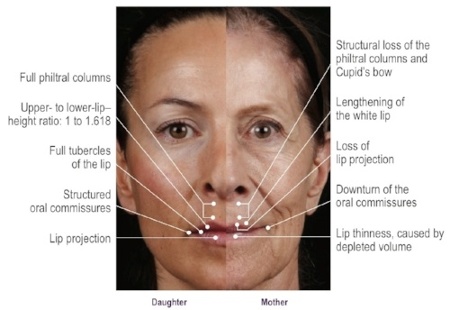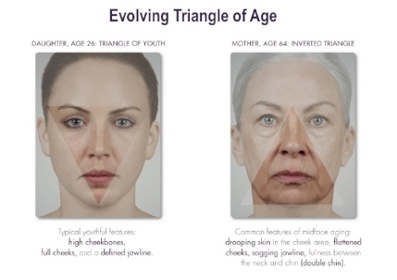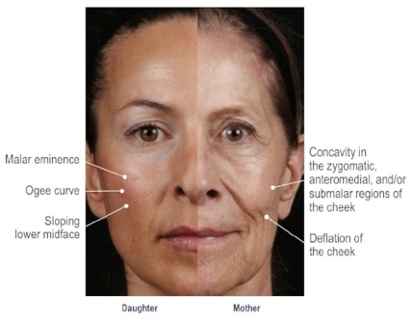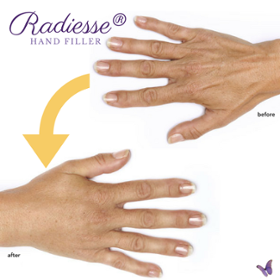Dermal fillers, face fillers, and soft tissue fillers are non-invasive ways to sculpt the facial features with immediate and long lasting results. The dermal facial filler industry is projected to hit $10 million by the year 2023, due to the growing satisfaction of clients all over the world. The procedure involves injecting the face in various areas to place a gel type product next to the facial bones to build up volume. This effect simulates the natural volume from youthful fat under the skin that we naturally lose as we age.
The American Society of Plastic Surgeons annual industry statistics report for 2016 shows soft tissue fillers increased in use to 2.6 million procedures annually in the U.S. alone. Making it the 2nd most consumed minimally invasive cosmetic procedure (Botox type injections are number one).
What are fillers?
Think of the face with its angles and curves as a sculpture that can be molded to some degree with the introduction of new volume. Imagine adding volume in certain areas to smooth lines or lift skin. Examples are:
- Smoothing or decreasing the vertical lines around the lips (smoker’s lines)
- Plumping lips
- Smoothing lines within the lips
- Defining the lip lines (also called the vermilion line)
- Filling areas of scaring due to injury or acne
- Filling out depressions in the facial features such as, the area from the nose to the mouth (also known as the nasolabial folds or laugh lines)
- Increasing volume in the cheek area to lift the mid to lower face (improving the contour of the jawline) and add youthful roundness to the contour of the cheek itself
- Filling in depressions at the temples which can make use look much older than necessary
- Smoothing a chin dimple or creating more chin projection
- Adding youthful plumpness to hands, reducing the prominent tendons and thin skin look as we age
- Adding volume to depressions or hollows under the eyes (tear troughs) which can make one look unnaturally tired
- Anchoring the area on each side of the mouth to prevent gravity from pulling the mouth down too much into a constant frown
- When used in combination with neurotoxin injections such as Botox® or Dysport to relax heavily worked muscles, the two can lift and smooth the face for an overall lifted, and more youthful effect
What are facial fillers made of?
Fillers are liquid or gel like substances and vary in composition. There are two basic groups: naturally derived and synthetic compounds. This type of treatment is often called a “liquid lift” as it is seen as a non-invasive face lift. Not all patients will achieve desired results with this treatment. Some with severe fat pad loss, droopy or sagging skin may need a surgical procedure or a combination of laser treatments and fillers to achieve the intended results. Speak with your provider very honestly about your goals.
Naturally Derived Fillers
The most commonly used today are multiple formulations of hyaluronic acid (HA), a naturally occurring compound in the body. The injectable types of HA offer various consistencies (firmness or softness) for different parts of the face and to achieve different effects. This naturally derived product also breaks down naturally in the body over time, thus the need to replenish the filler material in 1-2 years to maintain the desired effects.
This type of filler is the most common and houses the Juvederm and Restylane family of fillers:
- Juvederm Ultra Plus XC
- Juvederm Voluma XC
- Juvederm Vollure
- Restylane
Did you know?
Hyaluronic acid works by acting as a cushion and lubricant in the joints and other tissues. In addition, it might affect the way the body responds to injury. –WebMD
Some procedures utilize fat harvesting and transfer from a different part of the body to augment the facial features. In this way the injectable material is your own as collagen removed from one area of the body and injected into another.
Another naturally occurring filler is collagen, a natural protein found in our bodies. These were the first types of fillers in the market. Since it is a naturally occurring material it will naturally be absorbed by the body. Fibrel is a common example of this type of filler.
Synthetic Fillers
Fillers made with calcium hydroxylapatite, a mineral type compound found in bone but synthetically created is a semi-permanent filler. The body builds collagen around the material adding bulk to the affected area. The material cannot be broken down by the body. Radiesse is a great example of this type of filler, which is typically used for nasolabial folds, marionette and frown lines.
Synthetic fillers such as polymethyl-methacrylate microspheres (PMMA or clear acrylic plastic) or liquid silicone are also semi-permanent in nature. The thought is that collagen will produce around the injection material plumping the area. Bellafill is a common example of this type of filler. It takes a lot of the substance to create volume and can can take up to three months to see the full effects, however it is permanent.
Why and How Facial Fillers are Used

Many people (women and men alike) choose to use fillers not simply for youthful looks but to align how they look with how they feel on the inside. When you have a discrepancy between the inside and the outside, that can negatively affect one’s confidence. In many cases a bit of filler can make all the difference with low risk and immediate results. The appeal of fillers is both in that the results are subtle and long lasting. Most all patients are concerned about looking “overdone”. They don’t want to look like certain Hollywood celebrity types, rather they want a natural more youthful appearance so they feel more like themselves. One major manufacturer of filler products advertises that “Everyone will notice, no one will know.” This is a good way to look at the procedure. The effects are immediate and those in your life may say something like, “You look great! Did you get your hair done?” A common theme is that patients look more rested and more “pleasant” in the normal facial state.
The beauty of the naturally derived fillers also lies in the fact that they can be reversed if necessary but that action is rare. Another substance can be injected to dissipate the filler material.
Most of us know fillers are great for lifting and defining cheeks and plumping lips but today there are many types to choose from to get precision results for various problem areas of the face.
We spoke with Allergan®, the makers of the Juvederm family of fillers (America’s #1 filler brand) to better understand their options and indications.
- Juvederm Vollure XC – softens moderate to severe parentheses lines and wrinkles by adding subtle volume around the nose and mouth
- Juvederm Voluma XC – adds volume to the cheek area to correct age-related volume loss
- Juvederm Volbella XC – adds subtle volume to lips, smooths vertical lip lines (smoker’s lines) and gives a smooth, hydrated look to lips
- Juvederm XC – smooths moderate to severe parentheses lines and wrinkles around the nose and mouth
- Juvederm Ultra XC – adds fullness and plumps lips, smooths and corrects moderate to severe parentheses lines around the nose and mouth
A word about Radiesse, a synthetic filler made of calcium hydroxyapatite. This product is a quite firm and semi-permanent filler that works great for the hands (although also approved for the face). When placed between prominent tendons of the hands and massaged into place, hands that at once gave away the patient’s age now have a more youthful plumpness and less of thin skinned look. With the added volume the veins showing through the skin are minimized. The overall effect of before and after photos is amazing.
Your physician may decide to treat other areas of the face (what is called “off-label” treatment, meaning legal for use but not specifically FDA approved usage) with one or a combination of these formulas based on your goals and facial structure. Areas addressed can be, hollowness at the temples, lifting the cheek and/or mid-face area to ultimately lift skin near the mouth (jowls), filling in creases and lines around the mouth (parentheses), outlining the lips for greater definition and protrusion. Fillers are also used to sculpt or sharpen the contours of a variety of areas such as the chin, nose or jawline.
Fillers can also be employed to help reconstruct some deformities of the face such as asymmetry or depressions due to neurological disease or injury.
Neurotoxin vs. Fillers
It is important to not confuse dermal fillers with neurotoxin injections such as Botox® or Dysport. Neurotoxin injections prevent the muscle receptors from firing, relaxing often used muscles that can cause permanent lines and wrinkles. These chemicals prevent the muscles from overwork and are also temporary. Often fillers are utilized with injections such as Botox®, which combined create an overall more lifted, less lined, more youthful look. And when these treatments are combined with laser services to address the deepest layers of the skin, the effects though subtle are remarkable over time when well maintained. We’ve all see people of the same age group that look very different due to aging. One may look more refreshed or like he/she takes great care of themselves. It’s not obvious but it is noticeable especially upon comparison with others of the same age or the patient’s own before and after pictures.
The use of Botox, fillers, and laser treatments annually is becoming more routine…it’s now a part of personal hygiene, wellness and health like going to the gym, eating well, or coloring your hair.
The Possibility of a Vascular Occlusion
A vascular occlusion can occur for many reasons, but is also a slight possibility when getting a dermal filler injection. When the facial filler is injected improperly into a specific blood vessel in the face, an occlusion can occur.
According to the Journal of Cutaneous and Aesthetic Surgery, the possibility of receiving a vascular occlusion as a result of a cosmetic injection is .001%. Also, if an occlusion occurs, there is a solution available to dissolve the injection, thereby removing the blockage and any potential side effects.
*It is important to note that not all clinics and medspas have procedures in place to handle an occlusion. Be sure to ask your injector how adverse effects are handled and if there are procedures in place to protect you.
Further comfort comes from the fact that Allergan™ the original makers of BOTOX® and Juvéderm have only received 3 reports of permanent vision complications as a result of injections. Only three!
How Long Do Fillers Last?
It is very important to understand the temporary nature of your treatment plan and to prepare for proper maintenance. Filler treatments are temporary. They typically last 12-24 months depending upon the type and indication by the manufacturer. In some cases, depending on personal metabolism, fillers may only last 6-8 months.
We often relate this to the “tires going flat”. Think of the example of your car tires. You keep them aired up to the optimal pressure. You also check them periodically to make sure they remain at the optimal pressure. If not, you may add air or “top them off”. If you did not, over time, the tires would all go flat and the problems and effects would take much more effort and air to get them back to the optimal state. The same concept applies with filler treatments. You should schedule check ups periodically to determine if you need to “top off” the amount of filler so you don’t find your self in two years with all the filler absorbed and you have to essentially start over from zero. It’s easier to maintain the volume with smaller increments and it helps to spread out the cost over time. Take to your doctor about this and schedule those check-ups in advance so you don’t forget! Keep your results optimal. Remember your face continues to age even with multiple interventions. Protect your investment by doing the maintenance and taking great care of your skin daily with great professional grade skin care home products as recommended by your provider. And stay out of the sun!
When to Get Fillers
Age is really not the defining factor when deciding if fillers are right for you (though most patients are 40+). The keys are the facial features and what is happening under the skin with age related muscle tone and fat pad reduction. One key trigger for people is the noticing of deepening nasolabial folds (the parentheses lines) and marionette lines (lines from the nose to the mouth). Another common complaint is volume loss in the cheek or a sort of deflating look in that area. As we age the fat pads under the skin start to reduce and spread, flatting the cheek area. Adding filler to the area can restore a more sculpted, curved feature. The final key area that brings people in for a consultation is the development of jowls or skin sagging near the mouth and jawline. As strong, defined jawline is a prominent indication of youthfulness. Once the jowling begins many choose to lift in the mid face area to prevent that.
Fillers can also be used in younger patients for better structure definition not due to age but genetics. A well defined cheek and jaw can be addressed with filler in this way. Patients with volume loss under the eyes can present with hollowness and/or darkness under the eyes creating a look that does not match the age of the person. By filling the tear troughs, the hollowness is reduced and the darkness because their is now a barrier between the skin and the blood vessels.
Filler Treatment, What to Expect
First, you should always have a detailed consultation before any treatment. Your provider should ask various questions about what your concerns are and what your goals are. This should be a back and forth discussion so that you both are clear on what is possible with fillers, which fillers to use and what the realistic effects will be. Next, up the treatment.
- To begin, the face is thoroughly cleansed to prevent any bacteria from entering the body with the needle sticks.
- To make the procedure comfortable for the patient, the face is numbed. Typically fillers do have some numbing agents in the injected material itself but prepare yourself, you will have a lot of stick pokes and for that you need the skin to be numbed with a topical cream first. The provider will simply apply the cream and you will sit for 20-45 minutes before the cream is removed pre-injections. So you won’t feel the actual injections typically but you will “feel” and “hear” some things as the filler is placed under the skin near the facial bones. You will hear a popping sound as the needle pierces the skin. You may hear what some call a “crunching” sound as the needle passes through other types of facial tissue. This is normal. You will feel pressure when the filler is pushed into the area. This can feel unusual, but not painful. There are some areas of the face that are more sensitive and you may feel the needle prick (such as near the jawline or ears). Just make sure to communicate to your provider during the treatment and ask for a break if you need it.
- Your provider will look carefully at the contours of the face during the procedure and may massage or shape areas for the best effect. Depending upon the number of areas treated and the number of syringes of product injected, the procedure could take up to an hour or longer.
- Once complete, your face may feel different for a day or two, and you will notice that there is a new fullness. That evening and into the next day you may feel an aching (but not pain) in the areas where the most filler was injected. Your provider will advise you on if you should apply ice or take over the counter pain medication.
There is no downtime or recovery time with this treatment and you can resume your normal daily activities immediately. You may be restricted from strenuous activities such as working out, excessive heat or sun for 24 hours. Your provider will educate you on this and should provide a take home reference sheet should you have any post-treatment questions. At any point, if you have a question call your doctor right away.
As with any injection there is a possibility of bruising and your provider will review that risk with you and may offer an arnica (anti-swelling) cream or other options to prevent that.
What if I Don’t Like My Results?
The chances of you not liking your results is highly unlikely as the satisfaction ratings for these procedures is quite high. If, however, these is an adverse outcome, you do have the option to use hyaluronidase, a filler dissolver. This enzyme breaks down the HA filler and allows your body to absorb and metabolize the filler quickly. Hyaluronidase works within minutes, however, the full effect may take up to 24 hours. If you still have filler after that time, you may want to go back to your injector for more of the dissolving enzyme.
Some fillers, like Radiesse is not an HA filler and cannot be dissolved in this way. Patients will likely need to wait until the filler naturally dissolves for correction to take place.
Risks
As with any medical procedure, there potential risks but severe complications from fillers are rare. Some general adverse effects may include:
- Bruising or bleeding from the injection site
- Swelling
- Lumps
- Infection at the injection site
- Skin rash
- Skin redness
- Asymmetry
- Over or under correction
- Blindness
- Skin necrosis (serious ulceration of the skin)
Before engaging in a treatment, you may want to ask several questions of the injector to ensure all your questions are answered. You want to have clear expectations of the treatment procedure, the results and that you feel comfortable proceeding. We’ve compiled a list of possible questions to review with the provider below:
Pre-Treatment Questions
- How many syringes will be required to achieve my goals?
- How much does it cost?
- Do you offer financing options?
- Do you offer discounts for multiple syringes or package treatments?
- Where will the filler be placed?
- How many “sticks” with the needle are required?
- How long will the appointment last?
- Will I have numbing pre-treatment, what’s that procedure?
- What should I do/not do post treatment?
- Post treatment, what should I expect?
- Can I see filler before and after photos of real clients?
- Contraindications and risks review
- What about fat or collagen injections?
- What if I don’t like the outcome?
- When will I need to come back in to “top off” my filler?
- If I want more, how long must I wait?
- Can I combine treatments on the day of the procedure? (i.e. facial, laser treatment)
- How many injections have you personally performed in your career?
- How many patients do you normally see per month for filler?
Dermal fillers are one of the leading minimally invasive cosmetic treatments in the United States and the market is growing! There are many options available to give you a natural, sculptured, youthful look that lasts with low risk. You can find medspas across the country that offer this type of treatment and many, many patients. You probably know or work with people that are using dermal fillers right now. As the ads say, “Everyone will notice, no one will know.”








